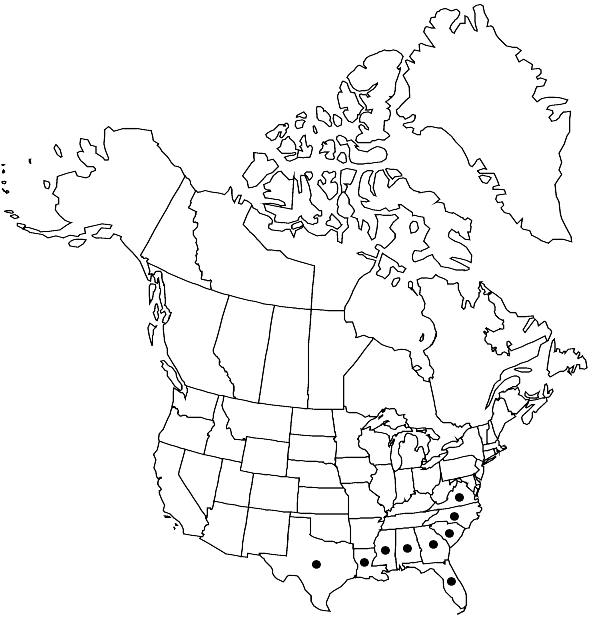Difference between revisions of "Bruchia drummondii"
Bull. Torrey Bot. Club 21: 361. 1894,.
FNA>Volume Importer |
imported>Volume Importer |
||
| (One intermediate revision by the same user not shown) | |||
| Line 45: | Line 45: | ||
|publication year= | |publication year= | ||
|special status= | |special status= | ||
| − | |source xml=https:// | + | |source xml=https://bitbucket.org/aafc-mbb/fna-data-curation/src/2e0870ddd59836b60bcf96646a41e87ea5a5943a/coarse_grained_fna_xml/V27/V27_627.xml |
|genus=Bruchia | |genus=Bruchia | ||
|species=Bruchia drummondii | |species=Bruchia drummondii | ||
Latest revision as of 21:27, 5 November 2020
Distal leaves long-subulate beyond an ovate, obovate, or broadly elliptic base, 1–3.2 mm, leaf base strongly differentiated in shape; distal laminal cells long-rectangular. Sexual condition autoicous. Seta 0.2–0.7 mm. Capsule neck short, broadly obovate to truncate. Spores reticulate. Calyptra smooth.
Phenology: Capsules mature spring.
Habitat: Sandy soil
Elevation: usually low elevations
Distribution

Ala., Fla., Ga., La., Miss., N.C., S.C., Tex., Va.
Discussion
The capsule of Bruchia drummondii is immersed in the perichaetial leaves or emergent, but not hidden by the leaf tips. This species is easily identified by the long-subulate leaves, relatively squat capsule, and reticulate spores.
Selected References
None.
Lower Taxa
None.
... more about "Bruchia drummondii"